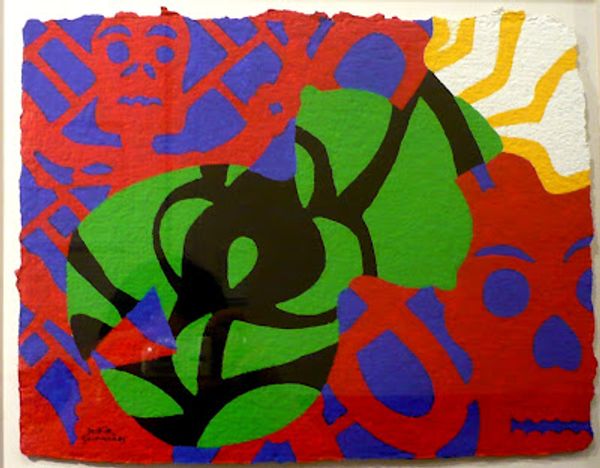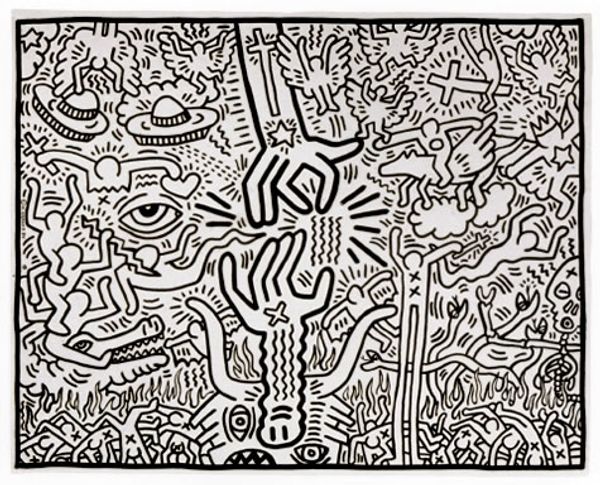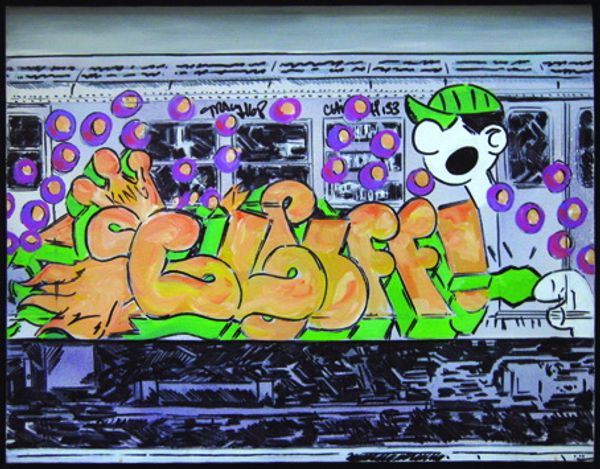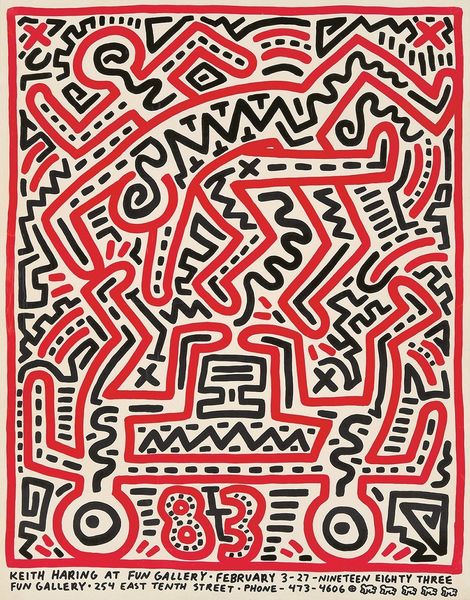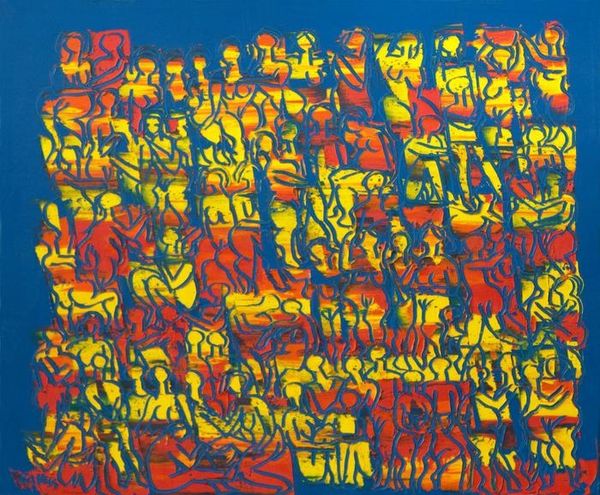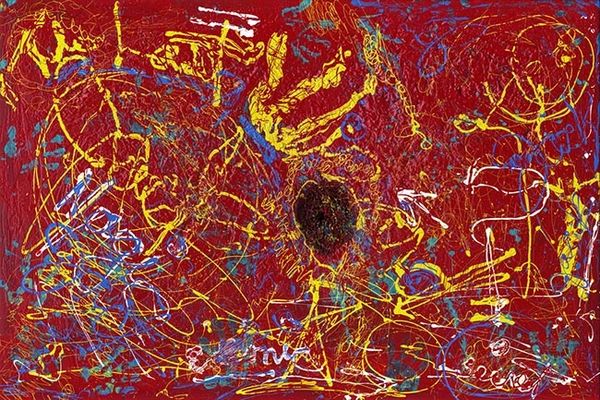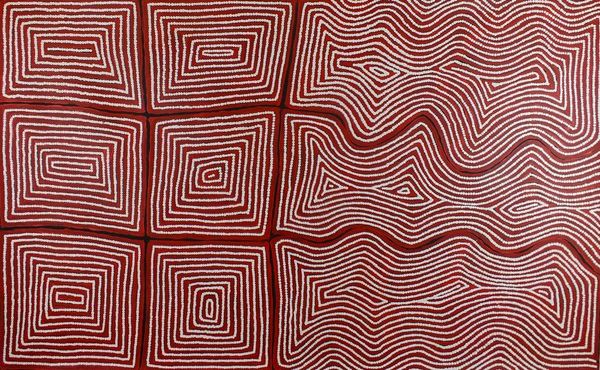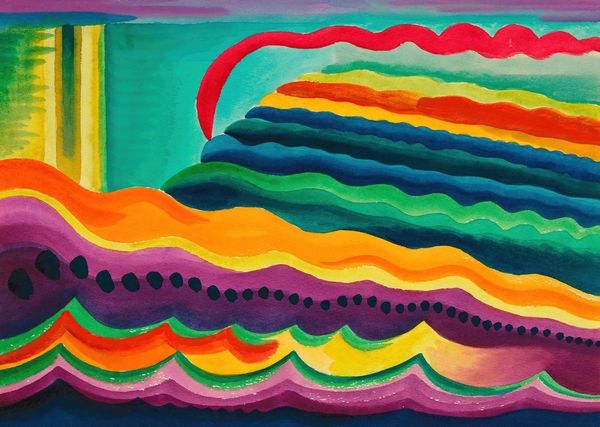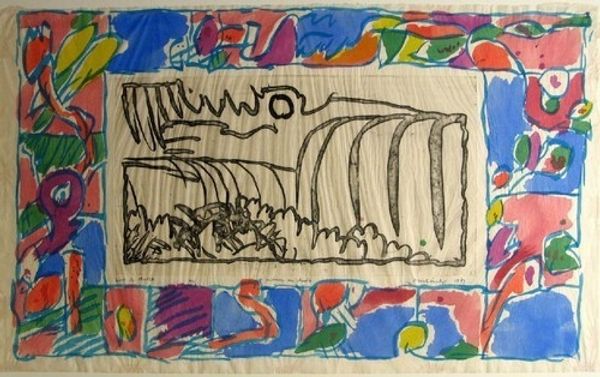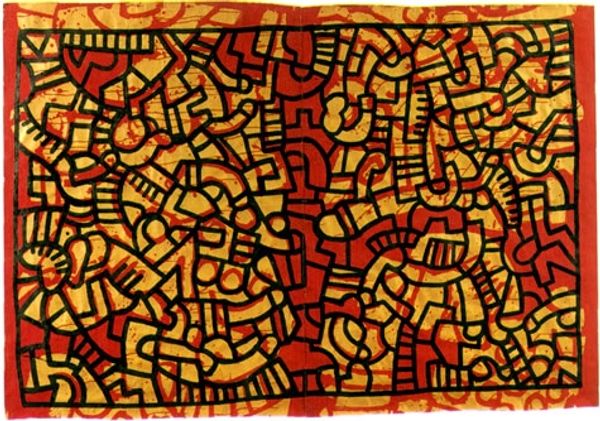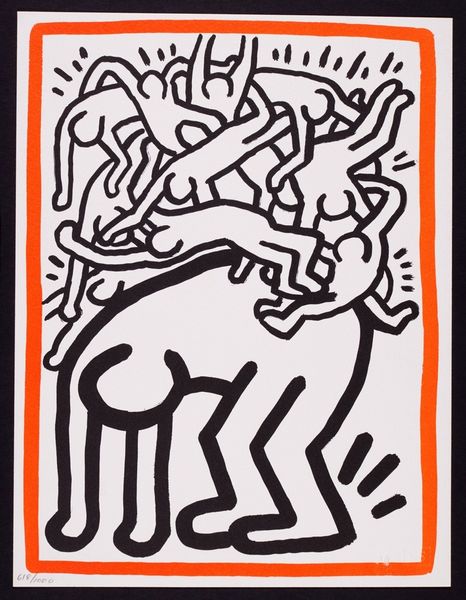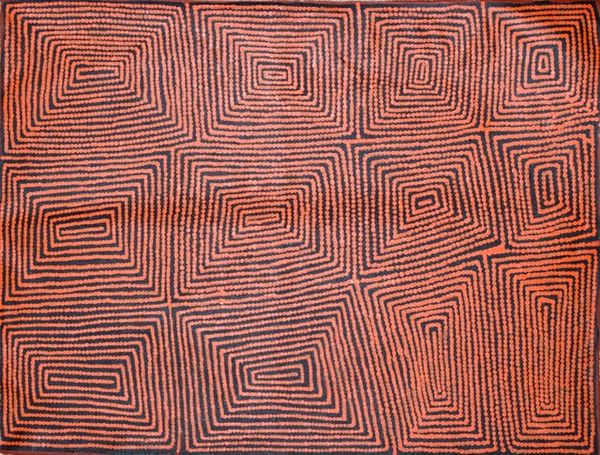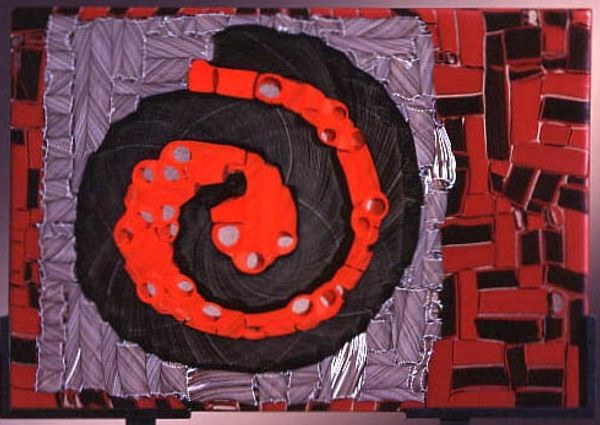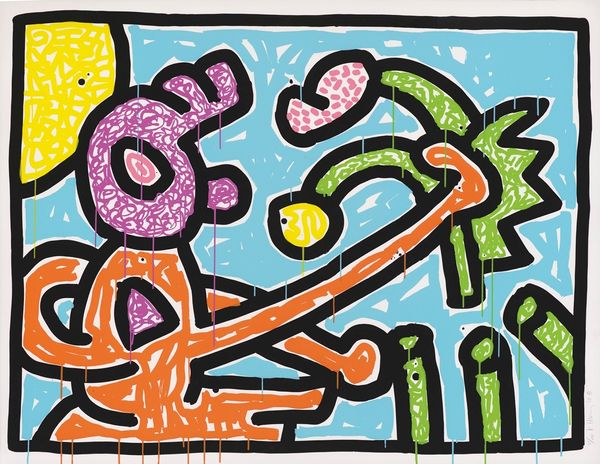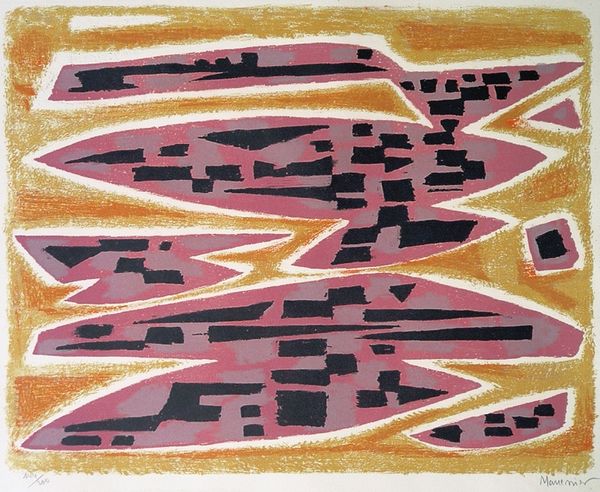
#
neo-pop
Copyright: Keith Haring,Fair Use
Curator: My goodness, that orange just vibrates, doesn't it? Like a warning flare. Editor: It does. What you’re seeing is Keith Haring’s “Crack Is Wack,” painted in 1986. Haring made this powerful mural to raise awareness about the crack epidemic that was ravaging New York City at the time. Painted on a handball court wall, it's an example of his commitment to public art, bypassing traditional gallery spaces to reach a wider audience. Curator: Exactly. Forget the polite distance of a gallery. Haring throws it in your face. The bold colors, the raw energy of the figures, they mirror the chaos and urgency of the crisis. The title itself is so direct. Did he intend for it to feel like an actual slap? Editor: Definitely. And the location couldn’t be more relevant. Think about it—a public space, readily accessible, transformed into a site of dialogue and social commentary. The imagery, too, is deliberately impactful: skeletal figures, dollar signs consumed by flames… it’s about visualizing the destructive consequences of addiction, right there in the community it affects. Curator: Right. You've got that grimacing skull overseeing a world of desperate figures. Are those like…little zombie people crawling all over each other? It feels claustrophobic. Like there's no escape. Even that simple "NYC 1986" stamp gives it the force of an official warning, a kind of plague marker. Editor: And in truth, that is precisely what it was like. It served to directly indict societal structures and policy failures contributing to the epidemic's devastation. Haring used his recognizable visual language—that blend of graffiti, pop art, and almost cartoonish figures—to communicate a very serious message in a way that was impossible to ignore. Curator: Looking at this now, I’m thinking about all the conversations we still need to be having. It is definitely not as simple as good-versus-evil. Haring created an interesting jumping-off point to that conversation. Editor: Precisely. “Crack is Wack” isn't just a painting; it’s a historical document and a call to action, a potent reminder of a dark chapter and the power of art to confront difficult truths.
Comments
No comments
Be the first to comment and join the conversation on the ultimate creative platform.
